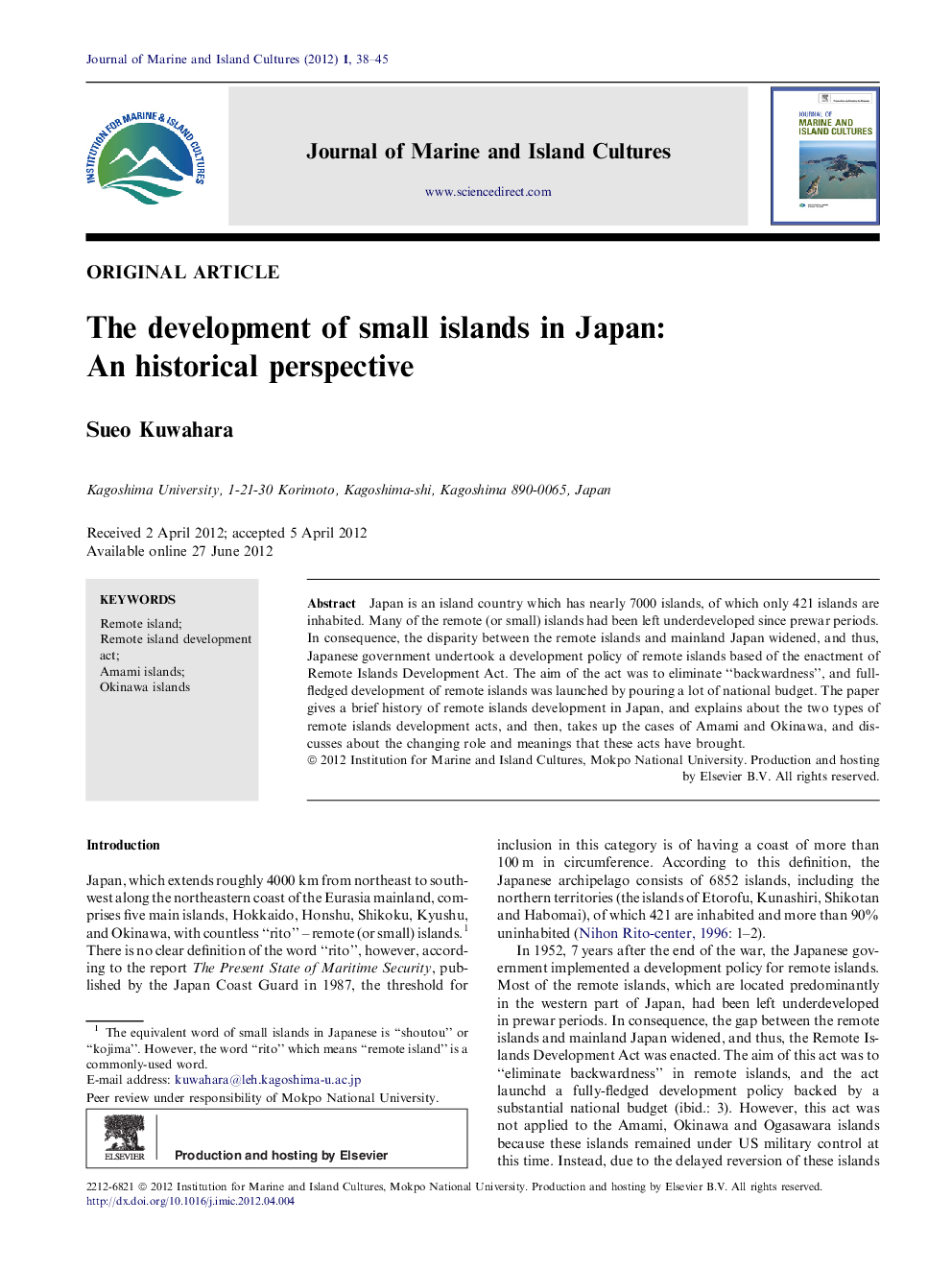| Article ID | Journal | Published Year | Pages | File Type |
|---|---|---|---|---|
| 1107106 | Journal of Marine and Island Cultures | 2012 | 8 Pages |
Japan is an island country which has nearly 7000 islands, of which only 421 islands are inhabited. Many of the remote (or small) islands had been left underdeveloped since prewar periods. In consequence, the disparity between the remote islands and mainland Japan widened, and thus, Japanese government undertook a development policy of remote islands based of the enactment of Remote Islands Development Act. The aim of the act was to eliminate “backwardness”, and full-fledged development of remote islands was launched by pouring a lot of national budget. The paper gives a brief history of remote islands development in Japan, and explains about the two types of remote islands development acts, and then, takes up the cases of Amami and Okinawa, and discusses about the changing role and meanings that these acts have brought.
► Japan is an island country which has nearly 7000 islands including 421 inhabited remote (small) islands. ► There have been two types of development act in Japan with regard to its remote islands. ► Japanese remote islands had long been viewed as areas necessary for eliminating the backwardness. ► Japanese government’s remote islands policy has changed from development to environmental protection.
